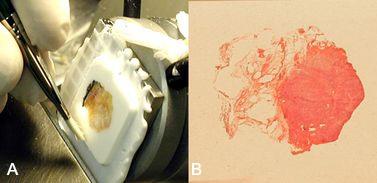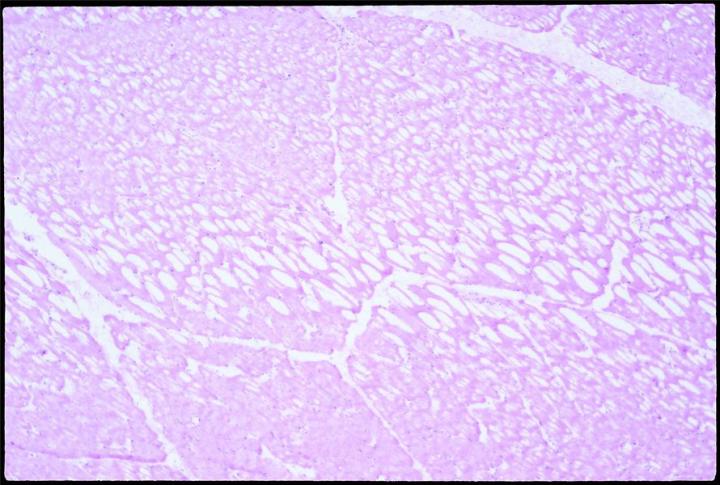
Mohs Surgery


In the early 1930s, Dr. Frederic E. Mohs developed a Chemosurgery procedure to treat certain cutaneous cancers. This procedure utilized frozen tissue and did not require a patient's surgical excision to go to a laboratory for processing.1 This surgery used a three-step approach to evaluate skin cancer surgical margins using a zinc chloride paste to chemically fix the area to be examined. The frozen excised tissue was embedded "en face," sectioned, and microscopically examined following the fixation process.2 (A crucial step of Mohs surgery is the embedding technique. Standard biopsy embedding is vertical/bread-loafed, while Mohs surgery uses the entire surgical margin in a single plane (en face). Mohs surgery is the gold standard for treating skin cancer.
In the mid-1960s, while studying with Dr. Mohs, Dr. Perry Robins realized the surgery had great potential in dermatology. Dr. Robins was instrumental in developing a fellowship training program and promoting Mohs surgery worldwide.3
This series will present relevant topics to today's laboratorians practicing Mohs surgeries. Areas discussed will describe steps for practicing surgeries, provide thoughts on setting up a new laboratory and offer tips for completing a Mohs laboratory inspection.
Introduction to Mohs Surgery
Skin cancer is the most common cancer worldwide.4 Basal cell carcinoma and squamous cell carcinoma are the most prevalent skin cancers, and 80% of these cancers occur on the head and neck.5 Mohs surgery can treat these and treat dermatofibrosarcoma protuberans (DFSP), extramammary Paget's disease, Merkel cell carcinoma, and early melanomas.6
Mohs surgery is performed under a local anesthetic and near a laboratory by a specially trained surgeon – usually a dermatologist who has completed extensive surgical training in dermatopathology and reconstructive surgery. Mohs surgery is a staged procedure in which the Mohs surgeon removes a layer of the visible cancerous area, inks and maps the specimen, and microscopically assesses the sample while the patient waits. If cancer cells remain, the surgeon continues to remove layers from the affected areas until no further cancer cells exist. The surgeon can selectively remove only the areas where cancer remains, sparing unaffected tissue by inking and mapping.
The benefits of Mohs surgery include:
- Completed under local anesthesia, usually in an outpatient setting
- Precise results - 100% of the tissue margins examined
- Excellent rate of cure
- Sparing of healthy tissue with little scarring
- Cost-effective
- Usually completed in one procedure
About the presenters

Linda has been with Henry Ford Health System for 22 years, all of which have been in the Mohs Surgery Laboratory, where she is currently a Lead Technologist. She has been active in the Michigan Society of Histotechnology for quite a few years, has been a member of NSH, and now belongs to ASMH.

Jennifer Healy has over 25 years of experience in histology, with a strong focus on Mohs Frozen Sectioning. She earned her degree in Biology and worked with cell cultures and retroviral research before transitioning to histology. She has worked with many Mohs surgeons in various settings from cancer centers and hospitals to private practice. Additionally, Jennifer has designed several Mohs labs for cancer centers and private practice Mohs surgeons.
Referencias
- Mohs: The gold standard. (2019, June 7). Skincancer.Org. https://www.skincancer.org/treatment-resources/mohs-surgery/mohs-the-gold-standard/
- Mohs FE. Chemosurgery for Facial Neoplasms. Arch Otolaryngol. 1972;95(1):62–67. doi:10.1001/archotol.1972.00770080110012
- Mohs Surgery - The Skin Cancer Foundation. The Skin Cancer Foundation. Published 2019. https://www.skincancer.org/treatment-resources/mohs-surgery/
- Skin Cancer Foundation. Skin Cancer Facts & Statistics - The Skin Cancer Foundation. The Skin Cancer Foundation. Published April 2020. https://www.skincancer.org/skin-cancer-information/skin-cancer-facts/
- Mohs Surgery for the Newly Diagnosed: What You Need to Know. The Skin Cancer Foundation. Published February 28, 2020. Accessed August 17, 2021. https://www.skincancer.org/blog/mohs-surgery-for-the-newly-diagnosed-what-you-need-to-know/
- What is Mohs surgery? www.aad.org. Accessed August 17, 2021. https://www.aad.org/public/diseases/skin-cancer/types/common/melanoma/mohs-surgery
Related Content
El contenido de Leica Biosystems Knowledge Pathway está sujeto a las condiciones de uso del sitio web de Leica Biosystems, disponibles en: Aviso legal.. El contenido, incluidos los webinars o seminarios web, los recursos de formación y los materiales relacionados, está destinado a proporcionar información general sobre temas concretos de interés para los profesionales de la salud y no está destinado a ser, ni debe interpretarse como asesoramiento médico, normativo o jurídico. Los puntos de vista y opiniones expresados en cualquier contenido de terceros reflejan los puntos de vista y opiniones personales de los ponentes/autores y no representan ni reflejan necesariamente los puntos de vista ni opiniones de Leica Biosystems, sus empleados o sus agentes. Cualquier enlace incluido en el contenido que proporcione acceso a recursos o contenido de terceros se proporciona únicamente por comodidad.
Para el uso de cualquier producto, debe consultarse la documentación correspondiente del producto, incluidas las guías de información, los prospectos y los manuales de funcionamiento.
Copyright © 2024 Leica Biosystems division of Leica Microsystems, Inc. and its Leica Biosystems affiliates. All rights reserved. LEICA and the Leica Logo are registered trademarks of Leica Microsystems IR GmbH.



